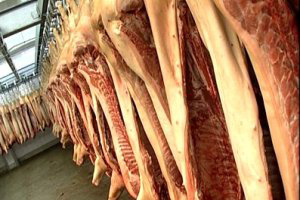Pleurisy a costly rising trend for pig producers

The incidences of pleurisy in pigs is increasing. Both BPEX Pig Health Scheme (BPHS) and Collection and Communication of Inspection Results (CCIR) reports and abattoirs are reporting up to 15% of the kill being severely affected.
It can cost producers at least least 75p (€0.86) per affected pig in processing costs alone. The cost is incurred when slaughter line speeds are slowed to deal with the additional dressing requirements of affected carcasses. Typically processors deduct half a kilo from the dead weight of affected carcases, resulting in a big loss to producers. In addition to these loses, pleurisy stunts the growth and performance of pigs: BPEX estimates the total cost could be as high as £2.30 (€2.64) for every single pig slaughtered (where there is 10% pleurisy prevalence).
But these losses are avoidable says BPEX pork safety and quality manager Emma Bailey-Beech.
“As this is a lung infection, pigs may not show any outward signs of the condition such as coughing or pained breathing. If pleurisy is highlighted, in the first instance, talk to your vet about changing your management practice to reduce pleurisy.
“Vets can help recommend changes to avoid and reduce further cases – such as minimising moving and mixing pigs, effective cleaning, disinfecting and drying of housing, and extending the down-time between batches.”
A BPEX factsheet which covers pleurisy, Action for Productivity no.28, is available at www.bpex.org.uk/2TS/publications and a revised version with updated costs will be published shortly.
The BPHS website gives details of the scoring and result guidance to ensure you get the most out of your reports. They also provide free post-mortem inspection data – sign up via the website at www.pighealth.org.uk or email pighealth@bpex.ahdb.org.uk
Source: BPEX







